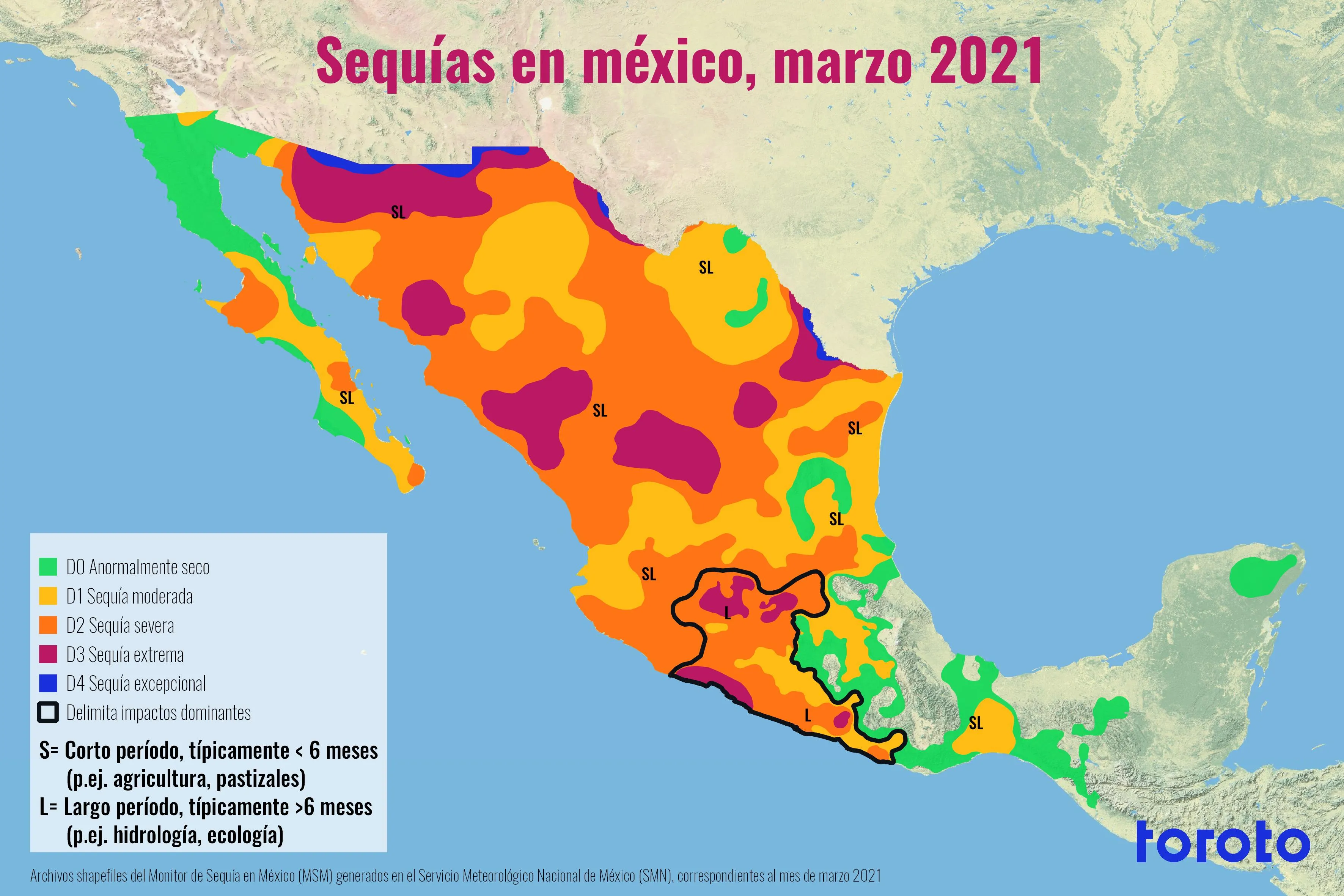Drought on a water planet



The United Nations emphasized this year the urgency of acting on global water scarcity and how this complex issue is directly related to climate change. There are a number of questions surrounding these issues... What is really going on with planet Earth? Are we experiencing droughts today? Although we know that 72% of the planet's surface is water, only 3% of that water is for human consumption and two-thirds of fresh water is found in glaciers, leaving us with a limited amount of this precious resource.
“The annual amount of fresh water per person has decreased by more than 20% over the past 20 years” (FAO, 2020)

Since ancient times, the human population has had the capacity to adapt to the climate depending on its settlement, even in places with scarcity or non-existence of water, in other circumstances they tend to migrate to places with the presence of water. Many inhabitants settled in places with nearby rivers or water sources, while others adapt to extreme climates and conditions with scarcity of this resource. The problem today is not only a climatic phenomenon, or if it is, this problem is intensified by anthropogenic factors.
We have scarcity, in a world with 7.7 billion people, this pressure will grow according to the population and will be aggravated by inequality related to the amount of natural resources that each territory has.
This is worrying, since resources are increasingly limited, a clear example is the scarcity of fresh water, which essentially affects life, destroying the basic pillars of food, causing more problems in social and political construction, both internally and globally.
According to the annual report of The World State of Agriculture and Food (FAO, 2016):
“More than three billion people live in agricultural areas with water scarcity and almost half of them, 1.2 billion, face serious limitations in this regard”
According to a report by the National Water Commission (CONAGUA, 2021), 1,295 municipalities in Mexico suffer from moderate to severe drought, while 488 municipalities have abnormally dry drought indices, it is clear that the main premise is scarcity, which will lead us to more severe droughts in the coming years. This document notes that 83.9% of the Mexican territory is affected by this climate phenomenon.

-The states most at risk due to extreme drought, with the highest rainfall deficit, are those in the north of the country, determining their percentage of land area (CONAGUA):
-Zacatecas 8.8%,
-Guanajuato 18.3%, -
Michoacan 18%, -
Durango 34.6%, -
Sinaloa 18.1%, -
Sound 41.3%,
-Chihuahua 1.8%,
-Warrior 7.0%
-State of Mexico 3.1%
-The states at risk of suffering extreme droughts as a result of severe droughts, determining their percentage of territorial extension are:
-78.8% Queretaro
-81.8% Sinaloa
-82.3% Colima
-38% Sonora
-6.3% B.C. South
-46.1% Chihuahua
-19.3% Coahuila
-48.1% Nuevo Leon
-21.4% Tamaulipas
-63.1 Durango
-62.7 Zacatecas
-53.6 San Luis P
-54.3% Jalisco
22.8% Aguascalientes
-45.5% Guanajuato
-47.3% Hidalgo
-3.0 Veracruz
-39.7% Edo. from Mexico
-2.0 Oaxaca
Conagua reports that drought and water shortages have spread over the past two years. Agriculture has been the sector most affected by this problem, extending to different crops throughout the country, forcing its inhabitants to leave their land in search of a better quality of life.
According to data from the Intergovernmental Group of Experts on Climate Change (IPCC, 2014), it has been recognized that climate change has accelerated in the second part of the last century, directly related to human factors, which bring about greater desertification and a more variable climate. It is interesting to know the type of droughts and to talk about one of the most recent concepts in the scientific field:
-Meteorological drought: There is a continuing shortage of rainfall. It gives rise to all other types of drought and usually affects large areas. It is related to global ocean-atmosphere behavior, deforestation, greenhouse gases.
-Hydrological drought: Decreased availability of surface and groundwater, which may prevent meeting water demands
-Agricultural drought: It can be defined as a moisture deficit in the root zone1.
-Socio-economic drought: An economic sector that is affected by water scarcity with adverse economic consequences is enough
It should be emphasized that the scarcity of water not only reflects its insufficiency, it unleashes a series of problems that are essential to life: crop production and livestock production, food supply, among other activities.
Overview of the future
Over the last 100 years, global demand for water has increased by 600%, and therefore, in the coming decades, water demand will increase significantly in the most important components (Unies, 2018):
-Agriculture
-The Industry
-The maid
In developing countries, 74% of the rural population does not have access to drinking water, leading to a series of social problems, forced migration, gender-based violence, diseases and malnutrition (FAO, 2020).
We cannot afford to wait for this crisis to resolve on its own or to have to experience it in order to create change. The demand for water by 2050 will continue to grow even more than the population, having a close relationship with the reduction of water quality. Many of the objectives and challenges of the 2030 agenda relate to the SDGs2. On this Earth Day we can become aware that our actions affect others, that we are all connected and as humanity we must work together to achieve positive change.
Art by Héctor Mendoza @elpajaro

1 Soil layer that contains plant roots.
2 Sustainable Development Goals: The UN approved the 2030 Agenda on Sustainable Development in 2015. It has 17 Sustainable Development Goals, including the elimination of poverty, education, equality, environmental protection and sustainable urban development.
References
Explore reflections, research and field learning from our work in ecosystem restoration.